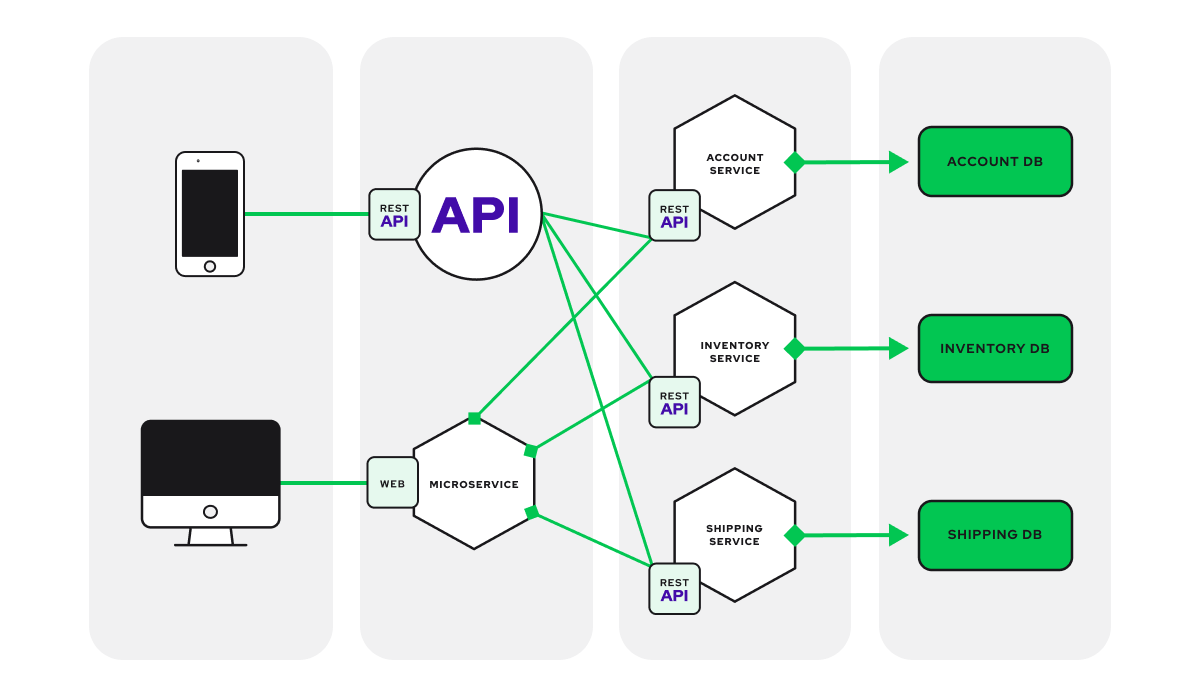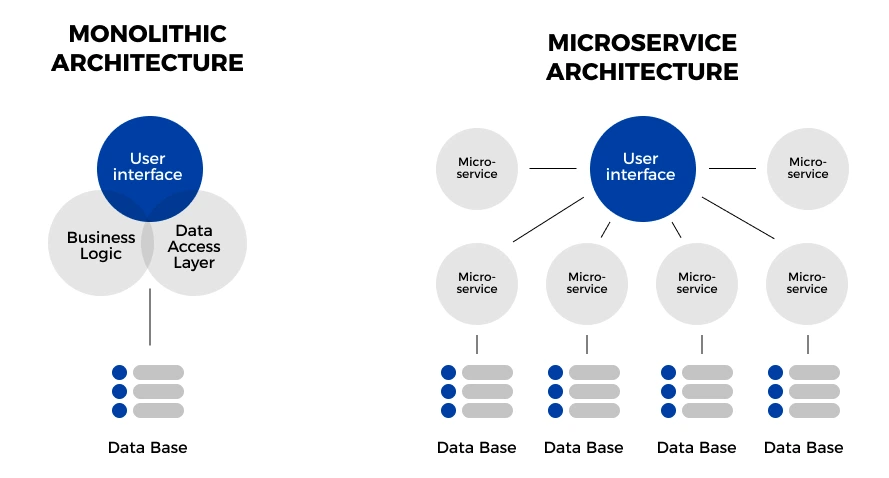
"Breaking Down the Pros and Cons of Microservices vs Monoliths"
8 April, 2023
0
0
0
Contributors
In today's blog, we will dive deep into what are microservices and monoliths. The pros and cons of both and when to use what. In the last article, we studied Message Queues. So let's get started.
In software development, a monolith is a type of application architecture where all the different components and features of the application are tightly coupled together into a single, large codebase.
Imagine a building made up of one solid piece of stone. A monolithic application is similar in that all the code that makes up the application is tightly integrated and interconnected, rather than being split up into smaller, more modular pieces.

In software development, a microservice is a type of application architecture where an application is built as a collection of small, independent services that can run their processes and communicate with each other via APIs.
Imagine a city where each neighbourhood has its services like schools, hospitals, and stores. Microservice architecture is similar in that each service can operate independently and has its specific purpose, but they all work together to form a larger, cohesive application.

The core definition of microservice is that the services need to be physically separated.
Example: A backend application for e-commerce where the payment service and inventory service are written on the same server but in different classes isn't a microservice. It is a kind of microservice as we are separating the business logic in the code but overall it is still a monolith.
In a true microservice architecture, each service would be running in its process or container, communicating with each other through APIs. This allows for more flexibility and scalability, as each service can be developed, deployed, and scaled independently.
So while the separation of classes is a step in the right direction towards a microservice architecture, it is still not a fully decoupled, independent system.
- It is faster than Microservices because services interact with each other via function calls and inter-process communication.
- When a new developer joins the team, it is easy to onboard as everything is present in a single place.
- Developing a monolithic architecture is typically less expensive than building a distributed system as it requires fewer resources to develop and maintain.
- In a monolithic architecture, all the components of the application are tightly coupled together. This can make it difficult to add new features or make changes to existing ones without affecting the entire application.
- While it can be easier to scale a monolithic application on a single server, it can become more difficult and costly to scale it horizontally across multiple servers or clusters.
- Monolithic applications are often built using a single technology stack, which can limit the ability to incorporate newer technologies and tools.
- We can use different tech-stack for different services making it much more flexible.
- Deployments are faster because testing/deployment needs to be done only on the services changed. The system is loosely coupled and change in one system doesn't affect another.
- Even if a single service fails, the system won't fail as a whole. No single point of failure.
- Microservices can be more complex to develop, deploy, test, and manage due to their distributed nature, which can require additional infrastructure, tools, and expertise.
- With microservices, managing data consistency across multiple services can be challenging, especially when dealing with transactions that span multiple services.
- Microservices can be more expensive to develop and maintain than monolithic applications due to the additional infrastructure and development costs.

In conclusion, both monolithic and microservices architectures have their advantages and disadvantages, and the choice between them depends on the specific needs of the application. Monolithic architecture can offer simplicity, performance, easier debugging, lower development cost, and easier scaling, making it a good choice for small to medium-sized applications with simpler requirements.
On the other hand, microservices architecture offers scalability, flexibility, fault tolerance, and better technology choices, making it a good choice for larger and more complex applications that require high scalability and flexibility. However, microservices can also come with increased complexity, overhead, and cost, which should be carefully considered when deciding on an architecture for a given application.
Ultimately, the choice between these architectures should be made based on the specific requirements of the application, the expertise of the development team, and the available resources.
